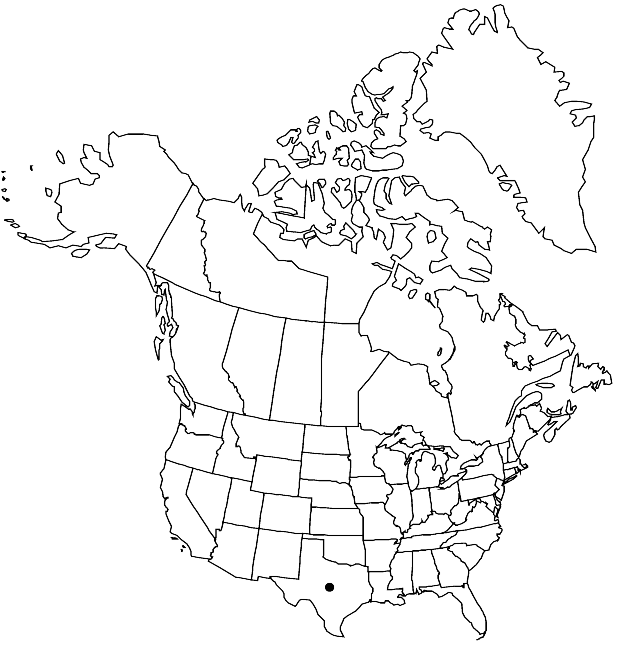Physaria thamnophila
Novon 12: 328. 2002.
Perennials; caudex simple or branched, (woody); densely (silvery) pubescent, trichomes (short-stalked), 4–8-rayed, rays furcate or bifurcate, (finely tuberculate throughout). Stems simple or few from base, decumbent, (straggling and flexuous, usually branched distally), 4–8 dm. Basal leaves: blade narrowly elliptic to oblanceolate, 4–12 cm, margins entire, sinuate, or shallowly dentate, (apex acute). Cauline leaves (sessile or proximal shortly petiolate); blade linear to narrowly elliptic, 3–4 cm, margins entire, sinuate, or remotely dentate, (apex acute). Racemes loose, (sometimes greatly elongated). Fruiting pedicels (recurved), 15–20 (–25) mm. Flowers: sepals elliptic, 3.5–4 mm, (lateral pair subsaccate, median pair thickened apically, cucullate); petals broadly obovate, 4–5 mm, (sometimes with short, broad claw). Fruits (pendent), subglobose or broadly ovoid, slightly compressed, 5–7 mm; valves (not retaining seeds after dehiscence), glabrous throughout; ovules per ovary unknown; style 1.5–2 mm. Seeds flattened. 2n = 16.
Phenology: Flowering Apr.
Habitat: Sandy soils, entangled in shrubs, cactus clumps
Elevation: 1700-1800 m
Discussion
Of conservation concern.
Physaria thamnophila is found in sandy areas with shrubs and cactus in sparse shrubland communities of Starr and Zapata counties. It sometimes flowers through September with sufficient moisture.
Selected References
None.
Lower Taxa
"not" is not a number. "elongated" is not a number."thick" is not a number."dm" is not declared as a valid unit of measurement for this property.
